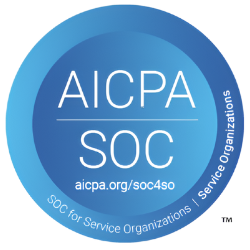Any organization that stores resources or stock in a stockroom need a strong framework to keep track of their goods. One of the most well-known strategies most organizations use is RFID tags that are very helpful in asset tracking. However, choosing the right type of asset tracking for your business can be a gamechanger!
After reading this blog you will be able to get a clear picture of RFID tags either they fit in your organization for your business or not So without wasting any time let us begin!
What Is RFID Technology (RFID Tags)?
RFID means Radio frequency identification. RFID technology comes in the RFID tags form they are small tags and uses radio waves for communication. This technology uses a specific radio wave which enables them to identify items and communicate. It quickly identifies asset movements and keeps track of each asset.
RFID technology mainly consists of 3 parts a tag, a reader, and an antenna.
Labels are made of a circuit and antenna. Those two sections communicate information to the reader using radio waves, which then, at that point, transforms that into data.
Also Read: Everything You Need to Know About FASTag RFID
Most labels are put away inside a chip or card to ensure them. These RFID tracking tags are extraordinarily little. In the market, several types of RFID are available & we will be discussing them below.
What Are the Various Types of RFID Tags Are Available?
Various RFID tags are as follows:
1. Low-Frequency RFID Tags
A low-frequency RFID tag allows you to cover frequencies from 30 to 300 kHz (Kilohertz). They have a slower speed of reading than high frequencies. Low-frequency RFID tags are beneficial in rainy and cold areas where moisture is found.
Advantages & Disadvantages of Low RFID Tags:
The advantage of low-frequency RFID tags is that they communicate better with the item that contains metal or water.
The disadvantage is that they have limited capability to read tags & they are not cost-effective compared to others.
2. High-Frequency RFID Tags
High-frequency RFID tags cover frequencies from 3 to 30 kHz. High frequency can be useful in moisture conditions, and they are also helpful in making payment and ticket applications. For quick data transfer, this technology can be effective.
Advantages & Disadvantages of High RFID Tags:
Advantages - Tags are cost-effective and more efficient than low frequency.
Disadvantages - difficulty in reading multiple high-frequency tags.
3. Ultra high-frequency RFID tags
Ultra high-frequency RFID tags cover from 300 kHz to 3 GHz (Gigahertz). It means it can cover up to 35 to 40 feet it also means that it can transfer data more quickly than low & high-frequency RFID tags.
Advantages & Disadvantages of Ultra-High RFID Tags:
Advantage - These tags are helpful in fast data transfer. Moreover, tags can be read from several feet.
Disadvantage - Its efficiency decreases when an item contains metal or water & these tags are expensive as well.
4. Passive RFID Tags
Passive RFID tags do not require a battery because they retrieve energy from the reader's signal. These Passive RFID tags are made up of Antenna & integrated circuits.
Advantages & Disadvantages of Passive RFID Tags:
They are cost-effective because they have only 2 parts. They are not lightweight. Last but not least they can have a life of about 20 years.
But the disadvantage of the passive RFID tag is that they have a very short range and they have limited storage & they do not have a sensor.
5. Semi-Passive RFID Tags
Semi-passive RFID tags come with features such as sensors, real-time tracking, and notifications. It also has an onboard transmitter as its main attribute which makes it different from active and passive RFID tags.
Advantages & Disadvantages of Semi-Passive RFID Tags:
The semi-passive RFID tag has the medium range it means more than passive RFID tags but less than Active RFID tags. Similarly, they are cost-effective compared to active RFID tags.
Disadvantages are that they have a limited life and semi-passive RFID tags need a reader otherwise they will not work.
6. Active RFID Tags
Active RFID is helpful in providing real-time information. It broadcasts information continuously.
Advantages & Disadvantages of Active RFID Tags:
Advantages - Active RFID tags provide accurate real-time information. They have a longer range than passive RFID tags.
The disadvantages of active RFID tags are that they are costly & life expectancy is 3 to 5 years then you need to buy a new tag.
Conclusion
As you can see there are several types of RFID tags are available on the market, but you have to figure out which type of RFID tag will be best for your business. Once you figure that out, you need automated software such as asset management software that can boost the efficiency of RFID technology.
This software automates workflow and alerts the system about the product expiry so that you can avoid failure. You can set an alert feature before inventory expires so that you can return it before they expire.
RFID tags can play a crucial role in increasing the efficiency of the organization, and you can increase the productivity of the organization.
Now that you have gone through several types of RFID tags, but every business has a different requirement. When you choose RFID tags you have to remember environment of your environment as well & it is an important aspect.
Frequently Asked Questions (FAQs)
1. What are the different types of asset tracking methods?
Other than RFID, different asset tracking methods are Barcode, QR Code (Quick Response Code), NFC (Near field communication), BLE (Bluetooth low energy), GPS (Global positioning system), IOT (Internet of Things).
2. For which purpose are RFID tags used?
RFID tags are used for several purposes such as asset tracking, it saves from asset theft and misplacement. It can be also used for health monitoring or for improving business operations. It can be helpful in providing accurate information on assets and valuable data helps in making crucial business decisions.
3. How do RFID tags help organizations?
RFID helps organizations by keeping track of assets. It will save assets from theft and misplacement. With the help of RFID tags, the system alerts the team when inventory is below the defined number, so it alerts the team before the stock is finished so that stock is refilled in time. As a result, business does not suffer from losses.

















































.webp)
.webp)
.webp)
.webp)
.webp)
.webp)
.webp)
.webp)
.webp)

.svg)




.webp)
.webp)











































.png)

.webp)



















